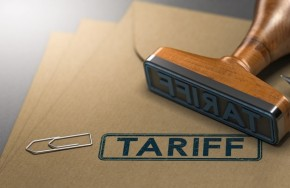
An IOE&IT Masterclass webinar earlier this week gave an overview of a pivotal development in the UK's withdrawal from the EU.
The UK Global Tariff, which replaces the current EU tariff regime, was published on 19 May.
Since then, the IOE&IT has had many queries from members about how the scheme will work.
In response, the Institute hosted the webinar on Tuesday 2 June, at which many questions were fielded by expert presenter, director of stakeholder engagement Kevin Shakespeare.
“Knowing the new tariff regime, which the UK government has made as straightforward as possible, is vital for businesses that trade internationally,” said Kevin Shakespeare, the IOE&IT’s director of stakeholder engagement who hosted the webinar.
Q: When will the UK Global Import Tariff take effect?
Kevin Shakespeare: The UK Global Import Tariff takes effect from the end of the transition period, that is, after 31 December 2020.
The tariff will apply to imports from any WTO country or bloc with which the UK does not have an agreement or preferential trade arrangements, including lesser developed countries.
Q: Where will zero tariffs apply?
Where the UK has agreed, or successfully negotiated a trade deal, then the terms of the trade deal will apply which can include zero tariffs (based on agreed rules of origin).
The UK is in discussion with a number of countries and trading blocs on trade deals, including, of course, the European Union.
Q: If there is no trade deal with the European Union...
In this scenario, the UK Global Import Tariff will apply to all imports arriving from the European Union.
Q: What happens during the remainder of the transition period?
For the rest of the transition period (until 31 December 2020), the current European Union Common External Tariff continues to apply.
Q: Will UK importers and supply chain operators be better off under the UK Global Import Tariff?
This depends on what goods are being imported and what trade deals the UK negotiates.
Consider the details for the UK Global Import Tariff. Under a fifth (16.8%) of tariff lines or goods have been ‘liberalised’ whereby the current EU tariff will be reduced to zero under the new UK scheme.
This includes goods important to manufacturing, production and supply chains such as screws and bolts, and copper alloy tubes or pipe fittings.
Q: Which industry sectors are most likely to benefit from the UK Global Import Tariff?
There will be benefits for a range of industry sectors.
In addition to the liberalised tariff lines, a further 40.2% of tariff lines have been ‘simplified’, whereby the tariff band has been rounded down or now expressed as a single percentage.
If we consider the significant changes announced in terms of sectors and sub-sectors of industry, here are some examples of sectors that will see a positive impact:
- Articles of stone and plaster
- Base metals and articles made of base metals
- Machinery and mechanical appliances
- Optical and photographic equipment
- Vegetable products
- Wood and articles made of wood
We should stress that these are just examples and every business should consider what the new tariff means for them based on their tariff lines.
This includes businesses in the food sector where simplifications may result in administrative benefits and enhanced business planning.
The IOE&IT is planning further Masterclasses on The UK Global Tariff and we will let readers know about them in time to register.

